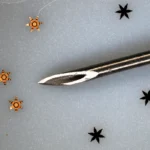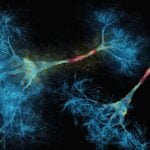Mechanisms Governing Organ Size Dynamics in the Skin Seminar with Sashank Reddy
Uniquely among mammalian organs, skin is capable of dramatic size changes in adulthood, yet the mechanisms underlying this striking capacity are unclear. The Reddy lab recently developed a method to induce controlled skin growth in genetically tractable mice. Using machine learning-guided three dimensional tissue reconstruction, they discovered that skin growth is driven by proliferation of the epidermis in response to mechanical tension, with more limited changes in dermal and subdermal compartments. Epidermal growth is in turn achieved through preferential activation and differentiation of Lgr6+ stem cells of the epidermis, controlled in part by the Hippo pathway. Single-cell RNA sequencing uncovered further changes in mechanosensitive and metabolic pathways underlying growth control in skin. These studies point to therapeutic strategies to enhance skin growth and establish a platform for understanding organ size dynamics in adult mammals.
Those who cannot attend in person can watch on Zoom.
About the speaker
Dr. Sashank Reddy completed his undergraduate studies at Johns Hopkins as a Beneficial Hodson Scholar, followed by MDPhD studies at Harvard Medical School and MIT under the auspices of the NIH Medical Scientist Training Program. Following his clinical training at the Johns Hopkins University School of Medicine, Dr. Reddy joined the faculty in 2019. His NIH-funded laboratory studies developmental biology and regenerative medicine with a particular focus on soft tissues. Dr. Reddy is also an accomplished biomedical innovator and a founder of venture-backed companies. In his role at INBT, Dr. Reddy works to grow the scientific and translational excellence of the Institute.
Latest Posts
-
 Johns Hopkins Postdoc Named in Forbes `30 Under 30′ List
December 8, 2025
Johns Hopkins Postdoc Named in Forbes `30 Under 30′ List
December 8, 2025
-
 Micro Grippers: David Gracias Builds Micromachines That Fold, Stick, Swim, and Sense—All Inside the Human Body.
November 20, 2025
Micro Grippers: David Gracias Builds Micromachines That Fold, Stick, Swim, and Sense—All Inside the Human Body.
November 20, 2025
-
 A bold new approach to autoimmune diseases
November 19, 2025
A bold new approach to autoimmune diseases
November 19, 2025


